This Week At Angama #30
31 August 2018 | This Week at Angama | Adam Bannister
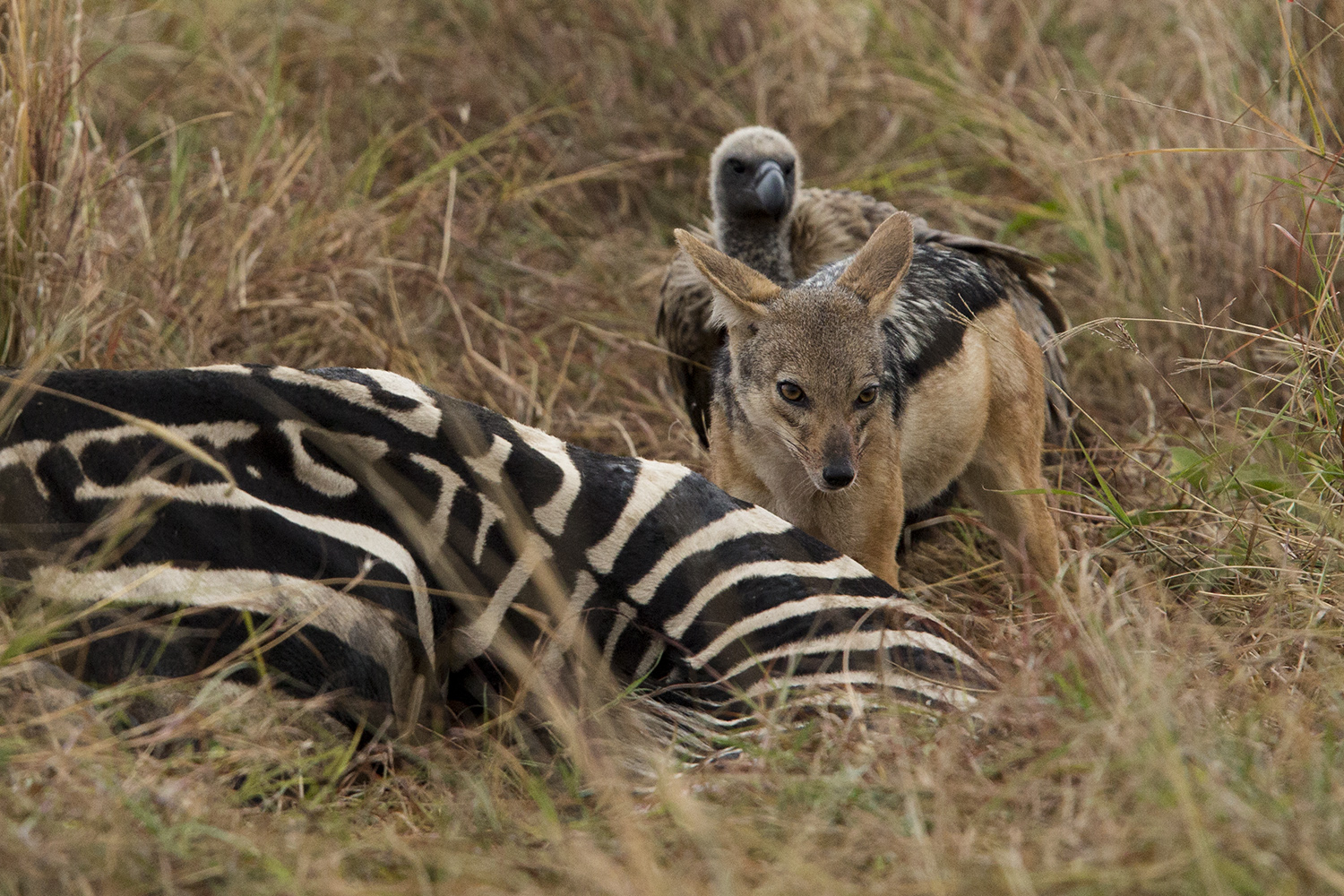
Late afternoon and evening thundershowers have reinvigorated the Mara. The roads are slushy, the depressions full of water and the Mara River is once again a raging torrent. The rain has ‘flushed’ the system and infused a new lease of life into every drive. The burnt sections of the Reserve are bursting with green shoots and the wildebeest are approaching in massive numbers. The foundations have been set for another special week of photography in the Mara, and only one shot with a glimpse of a lion…
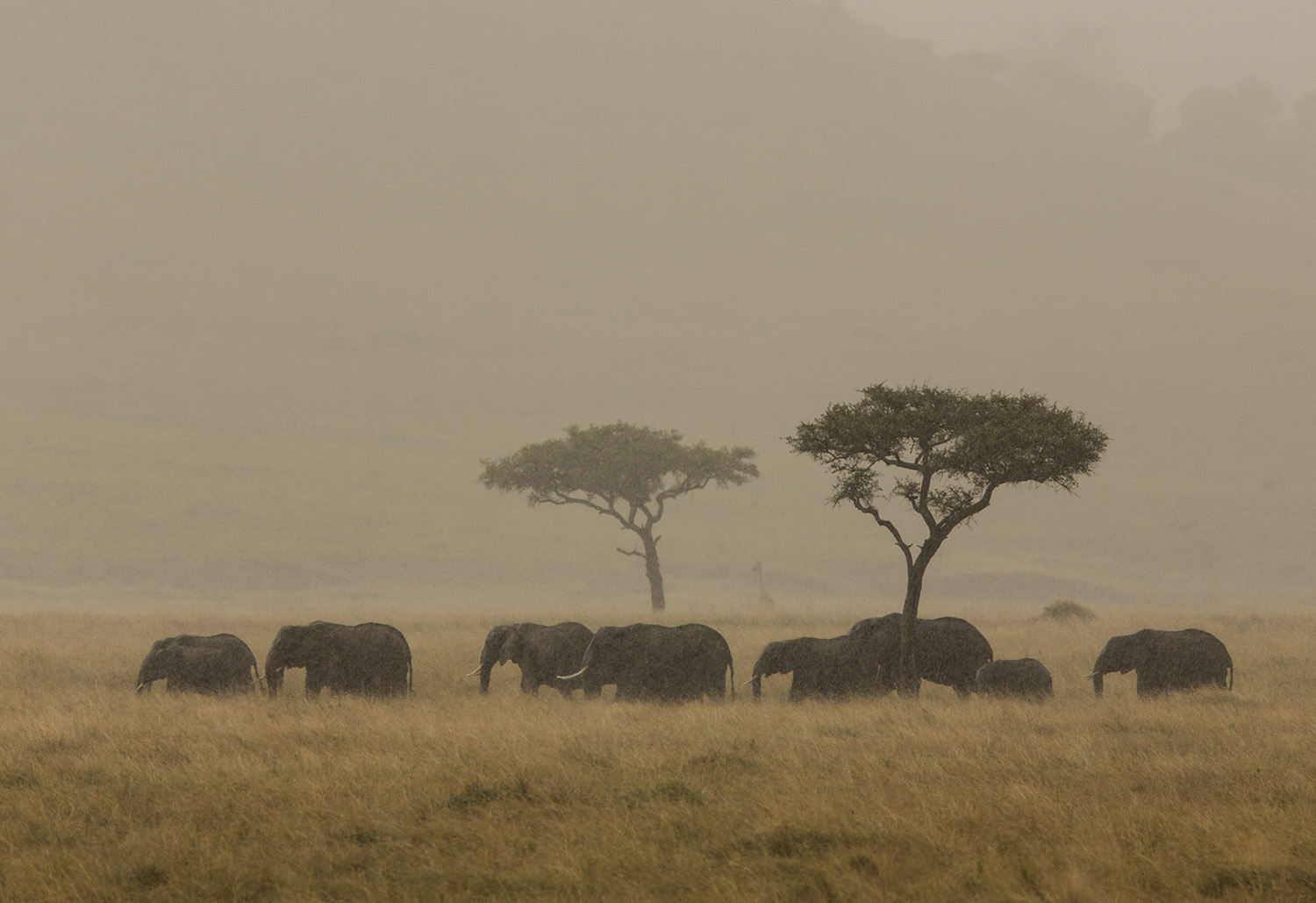
I always get excited when the weather starts to turn. Many people complain about the rain, but for wildlife photographers a little rain and thunder adds drama and depth shown here with this family of elephant traipsing through the grasslands in the pouring rain. [f 7.1, 1/320, ISO 500, +0.67; photograph by Adam Bannister]
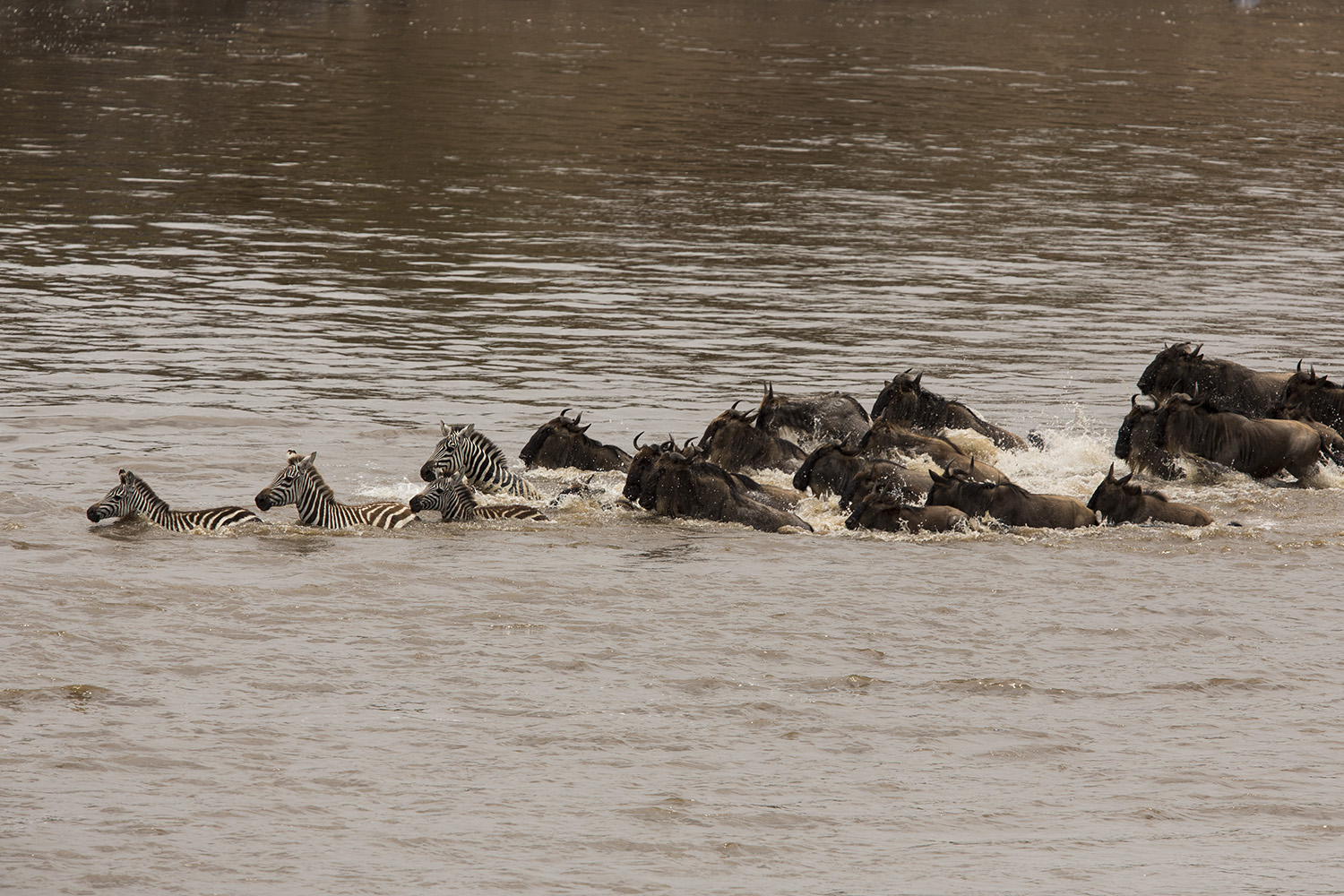
Crossings continue to take centre stage in the Mara. Interestingly the herds have stayed in the deep southern portions of the Triangle and the crossings are all happening around the ‘Lookout’ area of the Mara River. The question on everyone’s lips is how will the remainder of this 2018 migration season play out? [f 5.6, 1/2500, ISO 320; photograph by Adam Bannister]
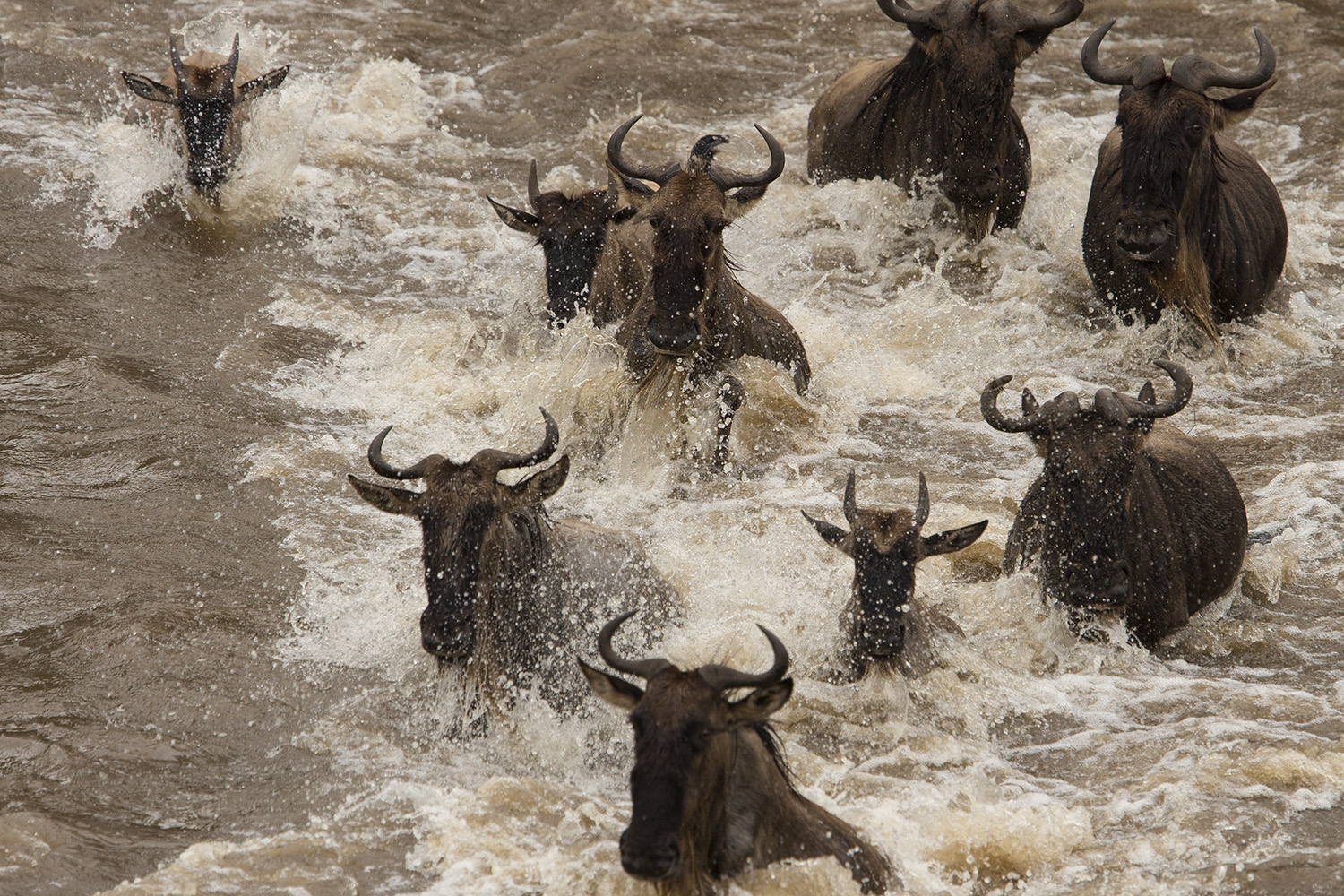
I have had the privilege of witnessing six crossings over the last few days and have been able to get a variety of perspectives on this truly ‘bucket-list’ natural phenomenon. [f 5.0, 1/2000, ISO 800, +0.33; photograph by Adam Bannister]

There is one crocodile along the Mara River that absolutely dwarfs all the others and this is the monster himself. I know this photo does not allow for scale, but his body is probably a metre wide. Those of you who have visited Main/Paradise Crossing will know the giant of which I speak. [f 6.3, 1/800, ISO 320; photograph by Adam Bannister]

The Great Migration offers plenty of opportunity to play around with black and white conversions. [f 5.0, 1/500, ISO 800, +0.67; photograph by Adam Bannister]
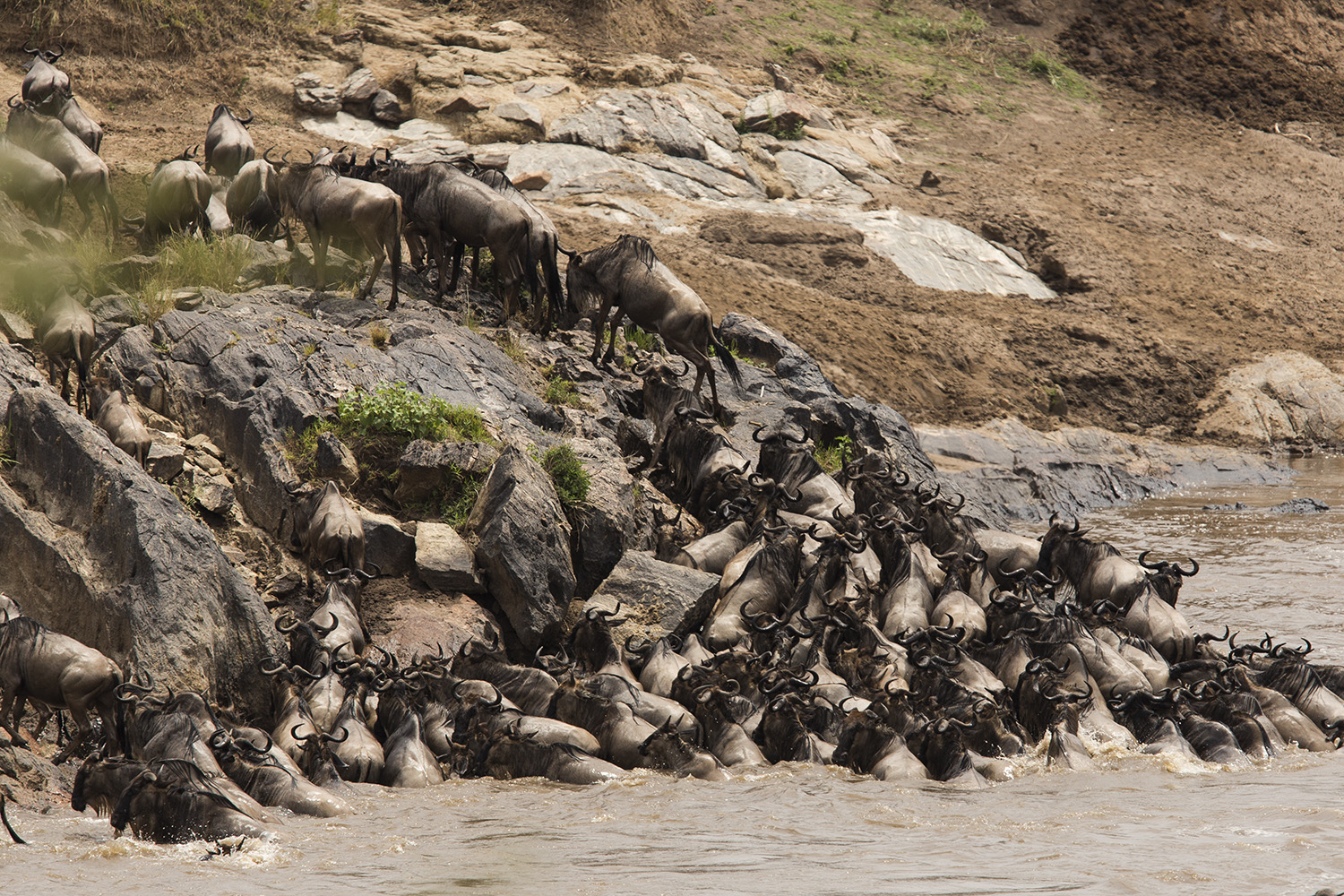
In terms of visual story-telling it is important to cover all parts of a crossing. Here I wanted to show the chaos of the ‘exit’ from the river. Hundreds of wildebeest literally clambering up slippery and razor-sharp rocky surfaces. [f 5.6, 1/1600, ISO 320, -0.33; photograph by Adam Bannister]
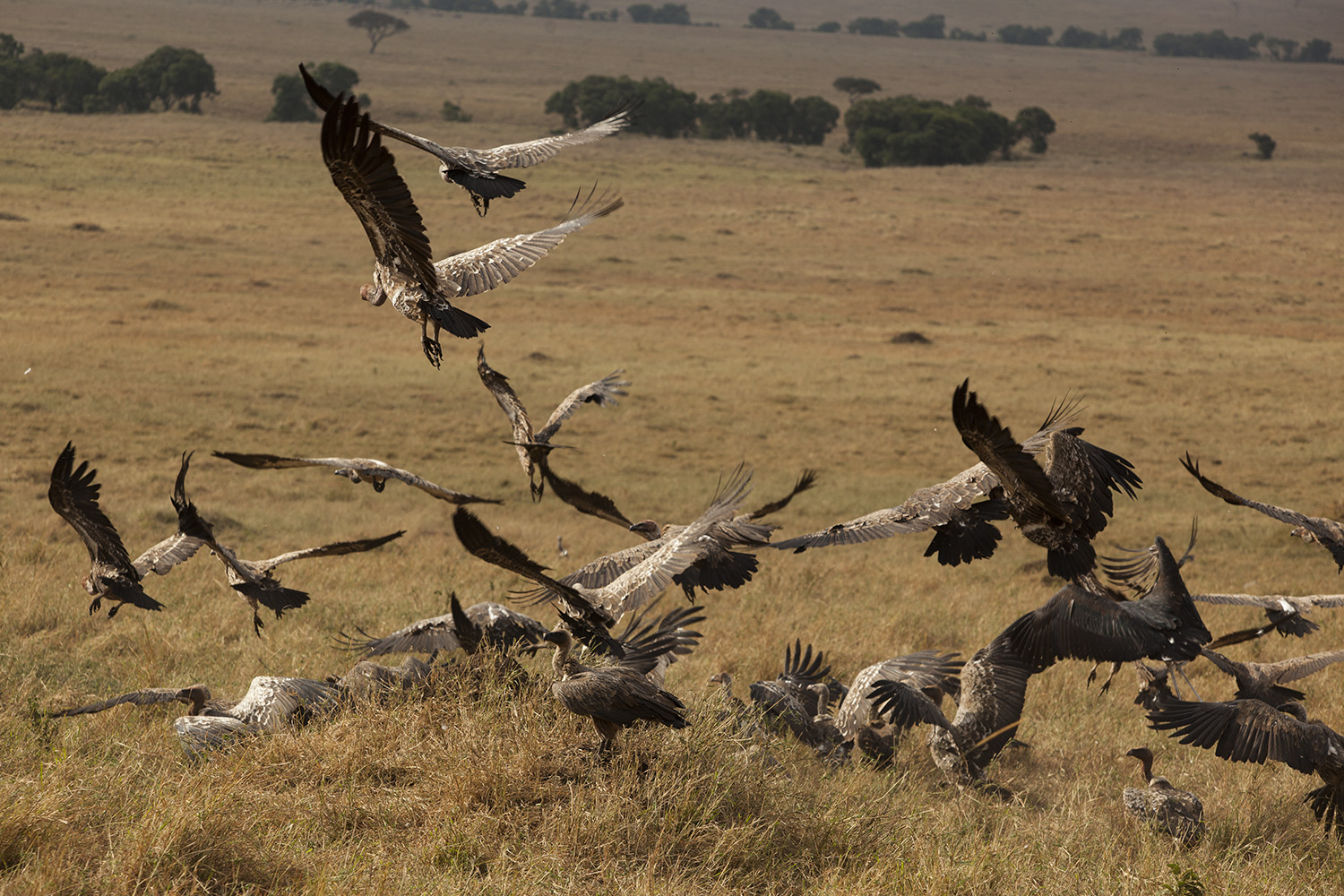
As the herds of wildebeest and zebra pass through, they leave in their wake an abundance of death with carcasses spread out across the river banks and the grasslands. But one animals demise provides life to many. This has been most apparent in the abundance of vultures that have arrived into the Mara Triangle over the past month. It is hugely exciting to see populations of this often-persecuted bird flourishing. Local guides talk with enthusiasm that vulture numbers appear to be up on last year. [f 7.1, 1/640, ISO 200, -0.33; photograph by Adam Bannister]
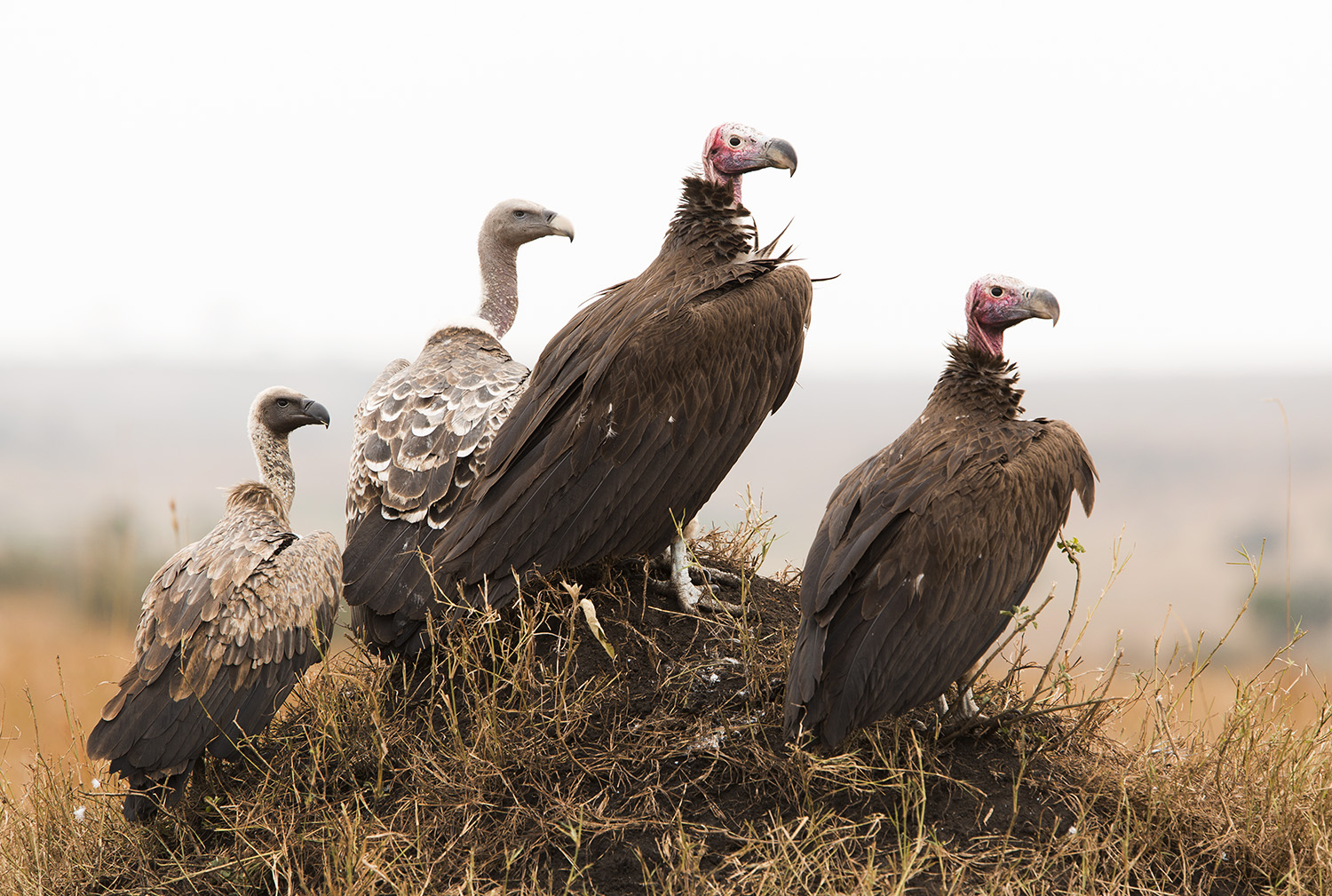
Most encouraging is the appearance of the lappet-faced vultures. With a wingspan of nearly three meters this particular species has had its population decimated through poisoning and habitat loss. Currently listed as endangered, recent data suggests its population and range is declining rapidly throughout Africa. The Maasai Mara remains one of the last true strongholds of this crucial scavenger. [f 5.6, 1/500, ISO 500, +1.00; photograph by Adam Bannister]
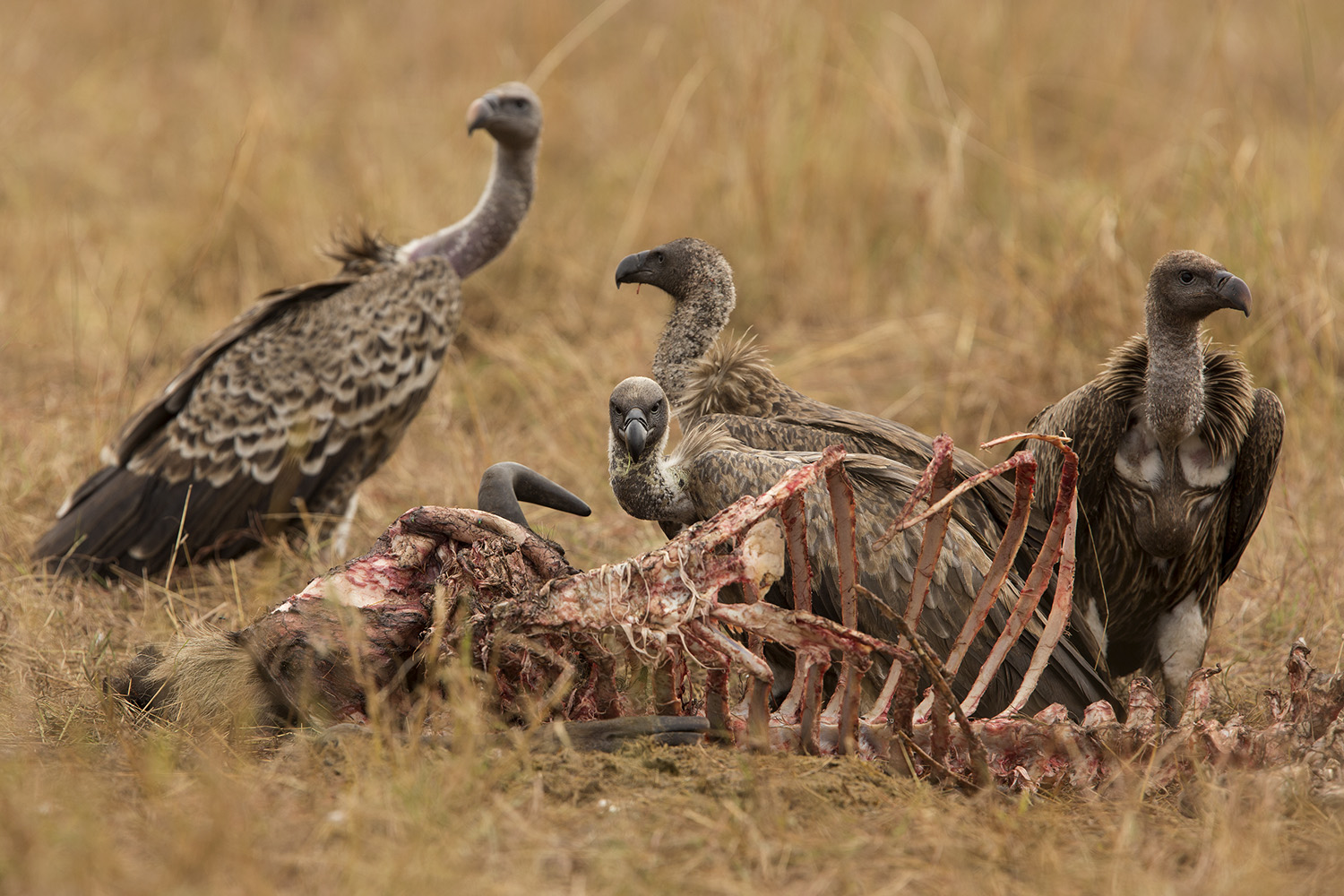
Nothing is left to waste in a healthy ecosystem. [f 5.6, 1/800, ISO 320, +0.33; photograph by Adam Bannister]
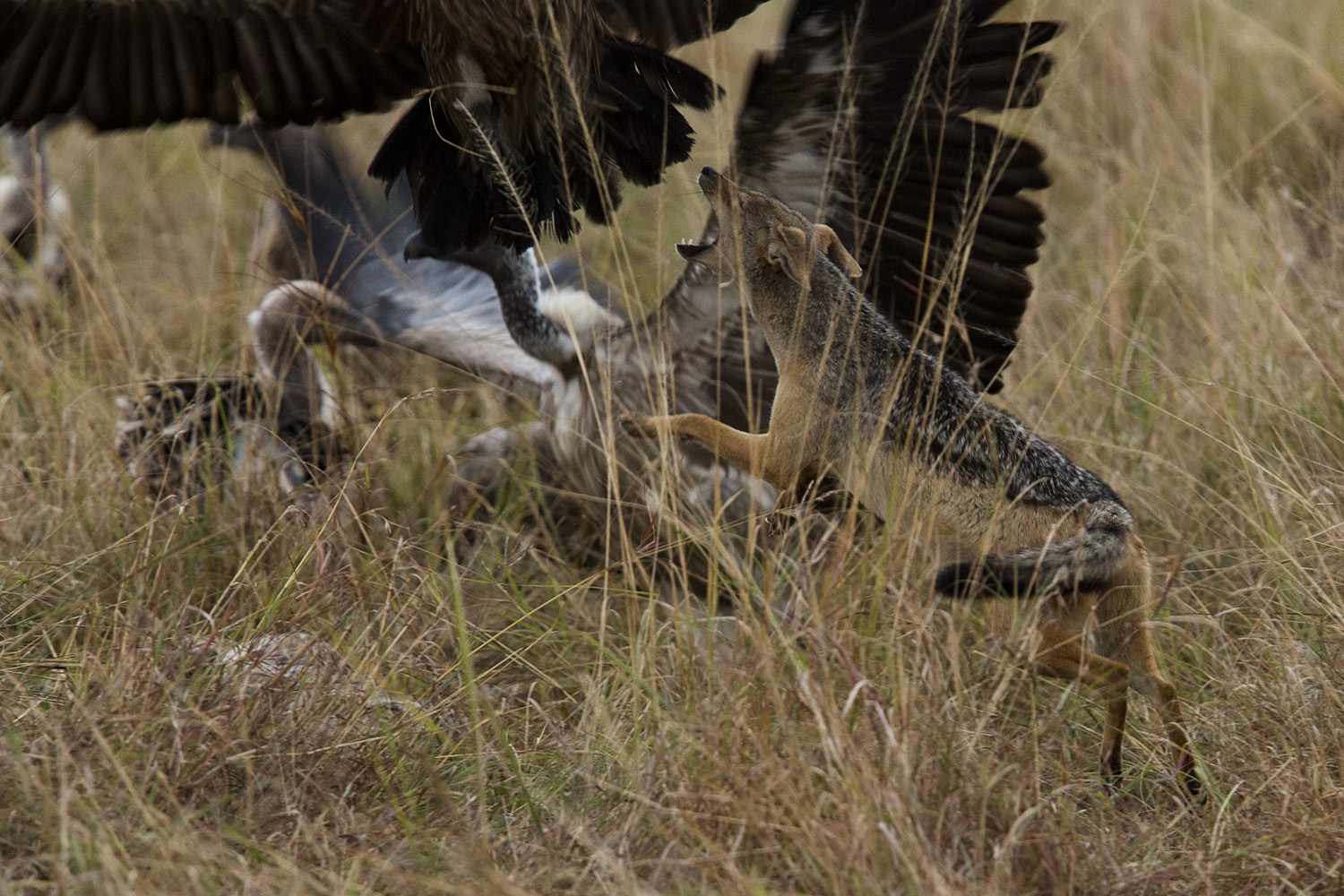
Photographically this was an exceptionally exciting but difficult sighting. Poor overcast dull morning light meant my ISO had to be raised into the thousands. Rapid, jolty and unpredictable movements from the jackals meant the shutter speed had to be high if there was any hope at getting the action in focus. As the jackals charged and lunged at the vultures focus needed to be changed in split seconds. It took me a couple of near misses (like this one here) before I finally got the shot I wanted. [f 5.6, 1/1000, ISO 2500; photograph by Adam Bannister]
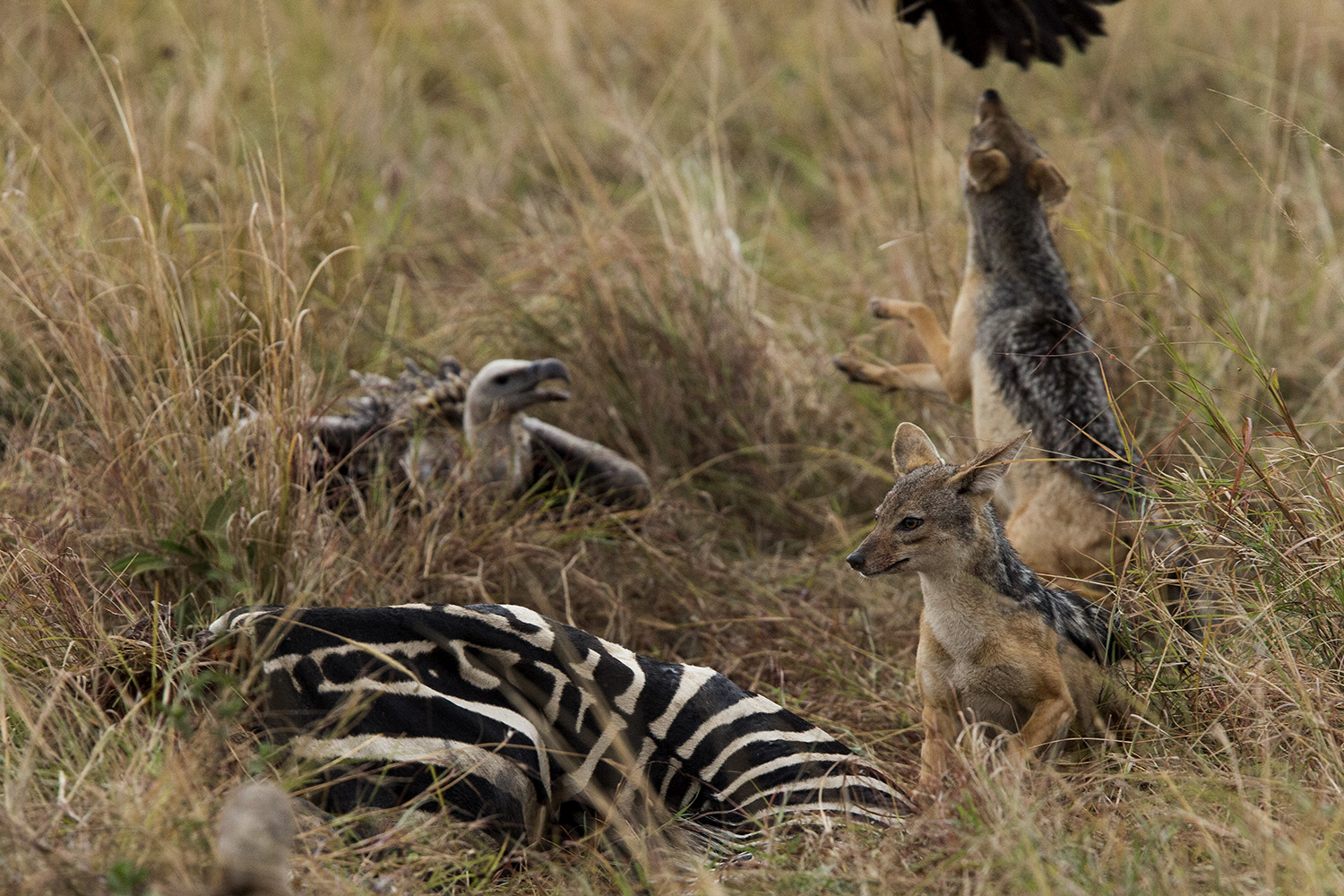
Another high action intense photograph that is slightly out of focus. [f 5.6, 1/1000, ISO 2500; photograph by Adam Bannister]
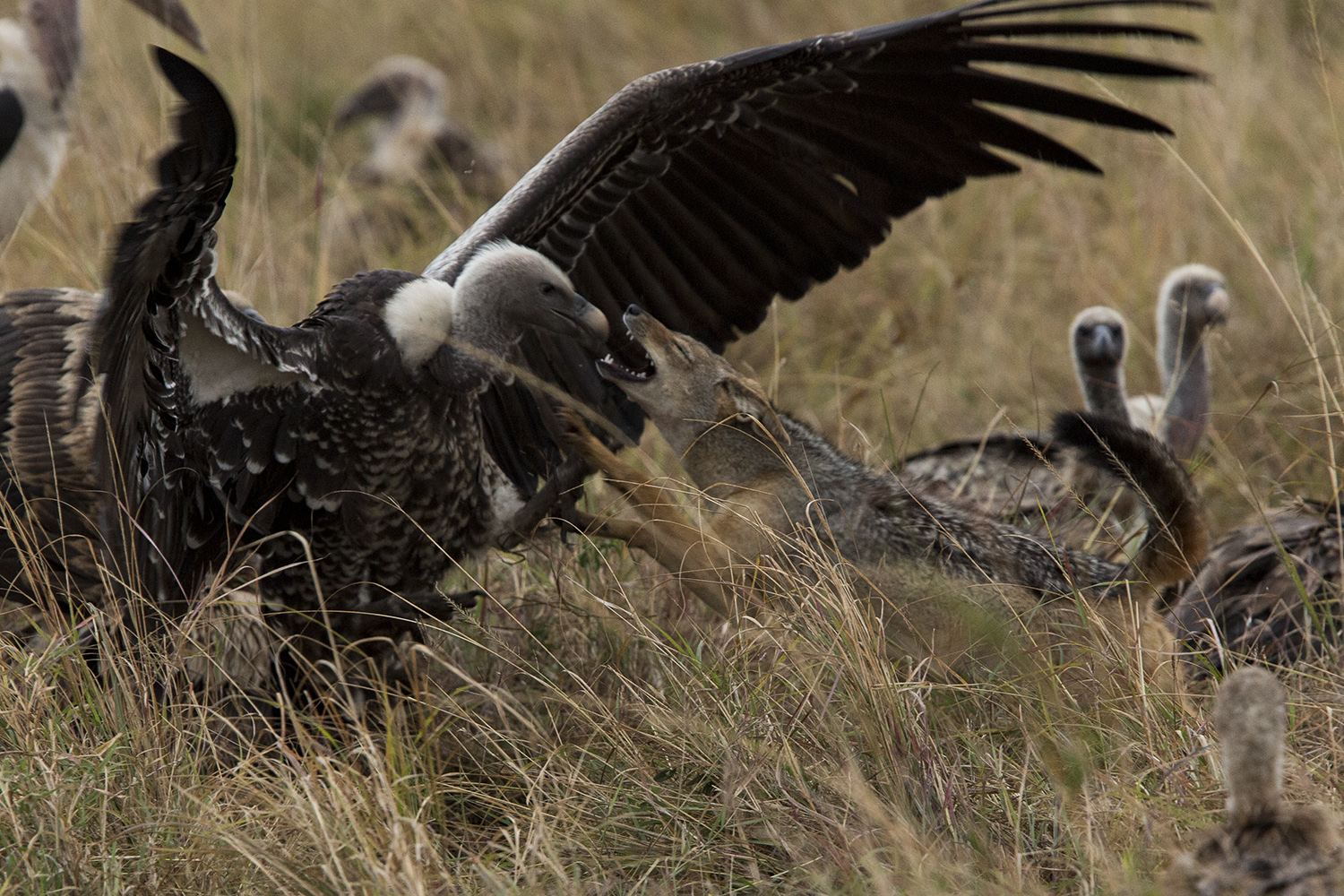
Even though many of the photos I took in this sighting were ever so slightly soft in terms of focus, they do go a long way towards capturing the action and energy of the scene. [f 5.6, 1/1000, ISO 2500; photograph by Adam Bannister]
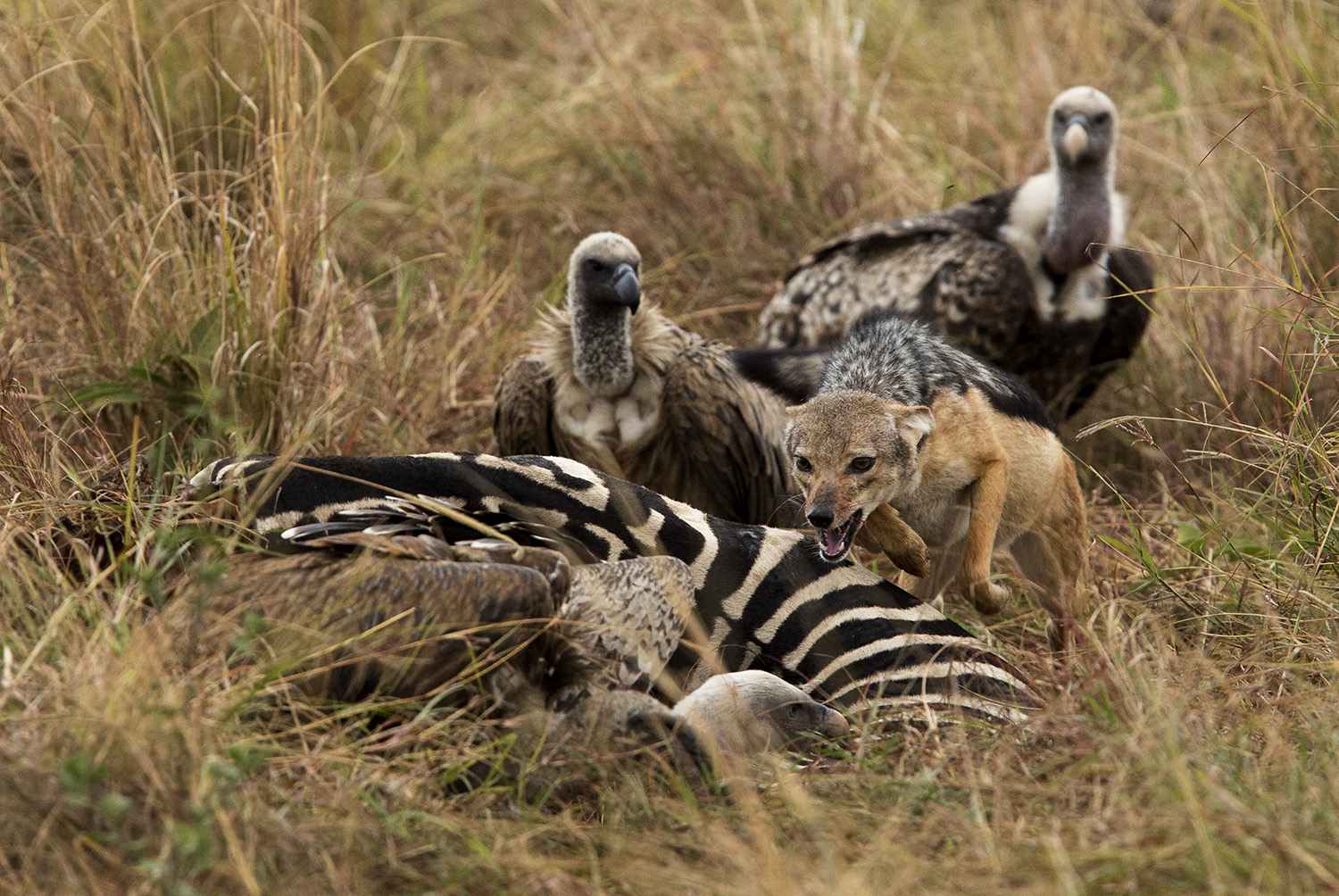
At last I got the shot I wanted. It wasn’t so much the speed of the shot, but the timing and the focus. [f 5.6, 1/640, ISO 2500; photograph by Adam Bannister]
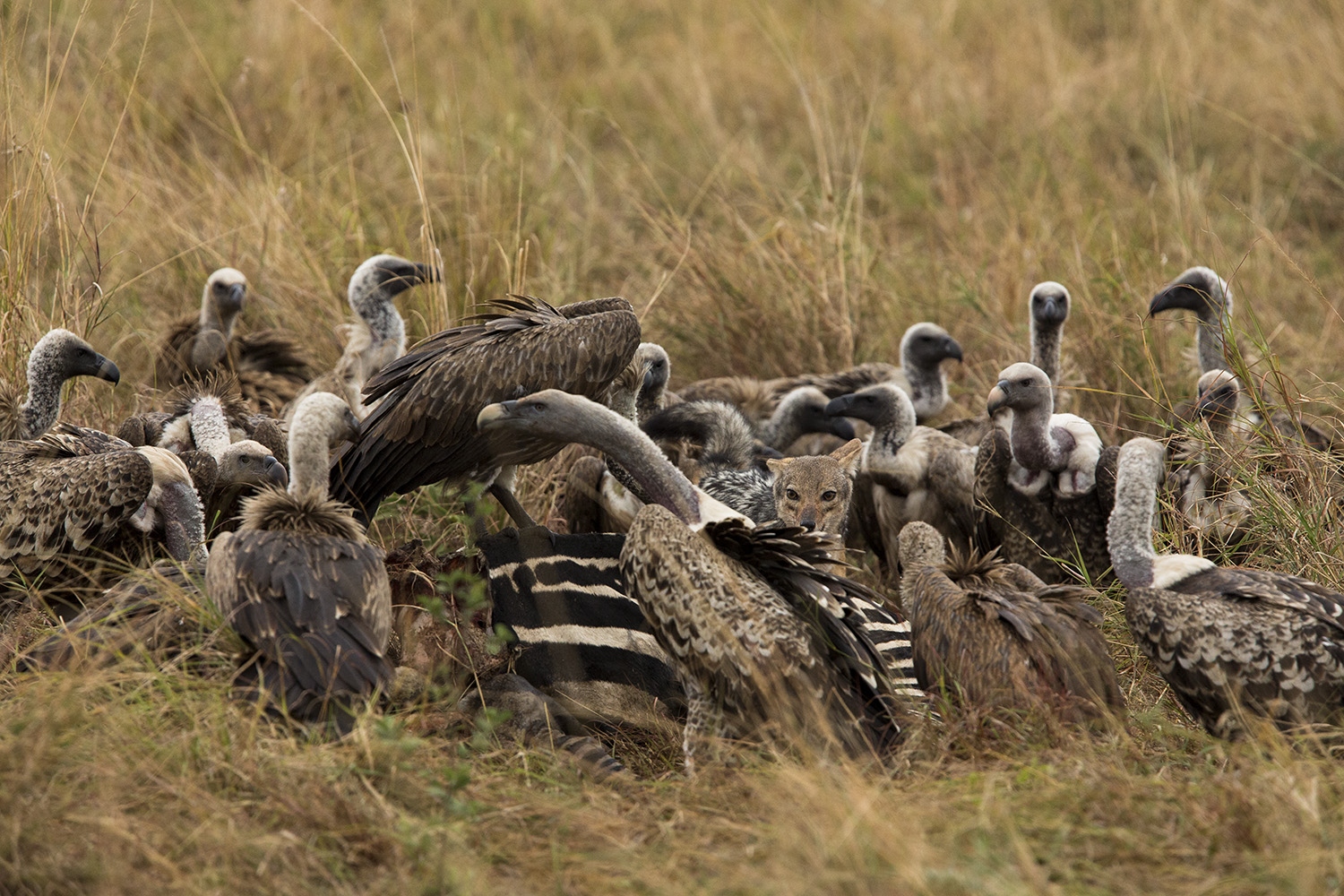
Eventually the jackals had to throw in the towel and surrender the carcass to the ever-growing mass of vultures. The two jackals put up a brave fight in what was an epic struggle to hold onto their new-found fortunes. Cameo sightings like this are peppered around the Maasai Mara on a daily basis. [f 5.6, 1/1000, ISO 2500; photograph by Adam Bannister]
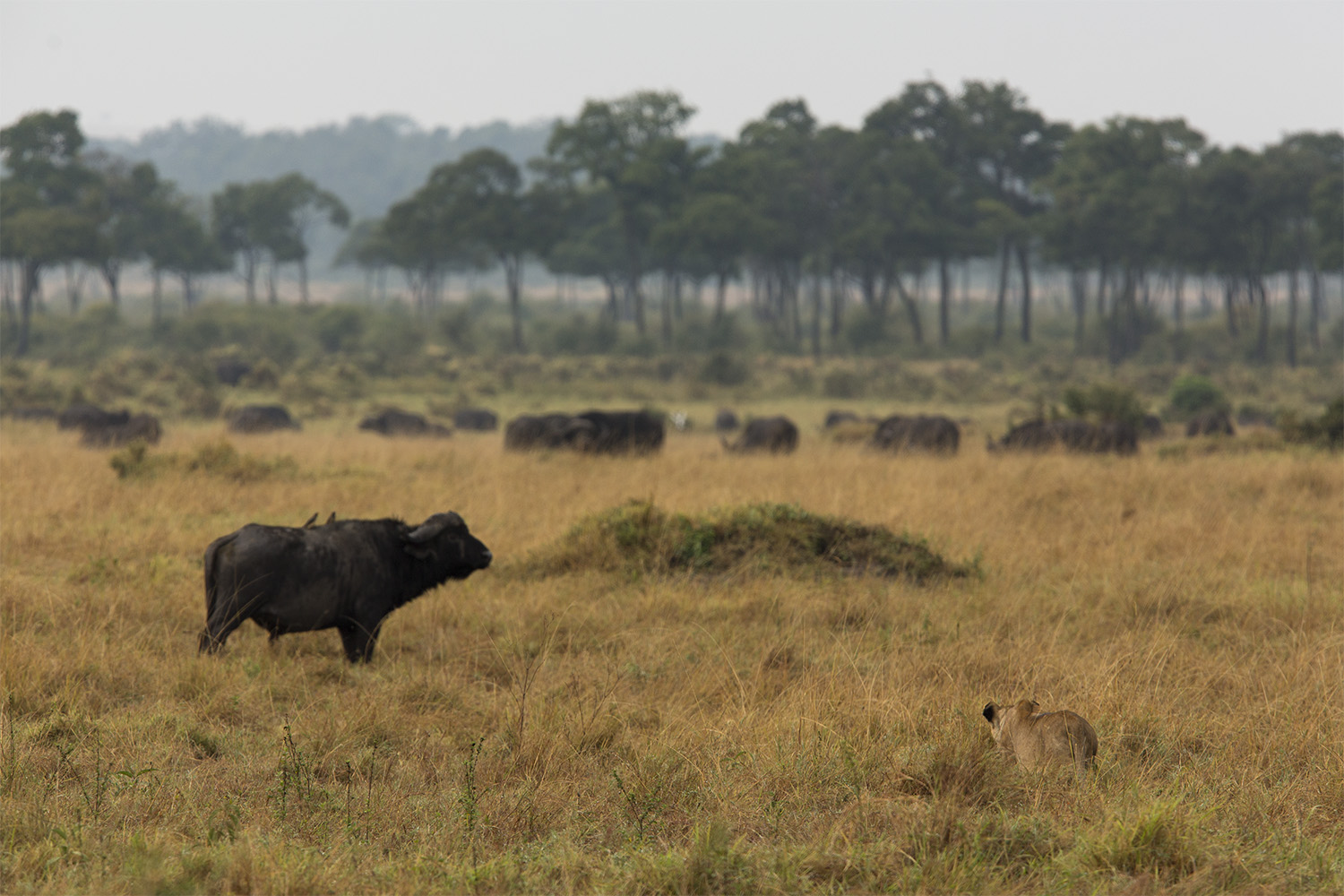
One of the younger members of the Angama Pride tries her luck with a buffalo separated from the security of the large herd. Whilst watching this ‘hunt’ play out it was very obvious to me that this was less of a hunt and more of a game for the lion to see how close she could get before being spotted. [f 6.3, 1/500, ISO 500; photograph by Adam Bannister]
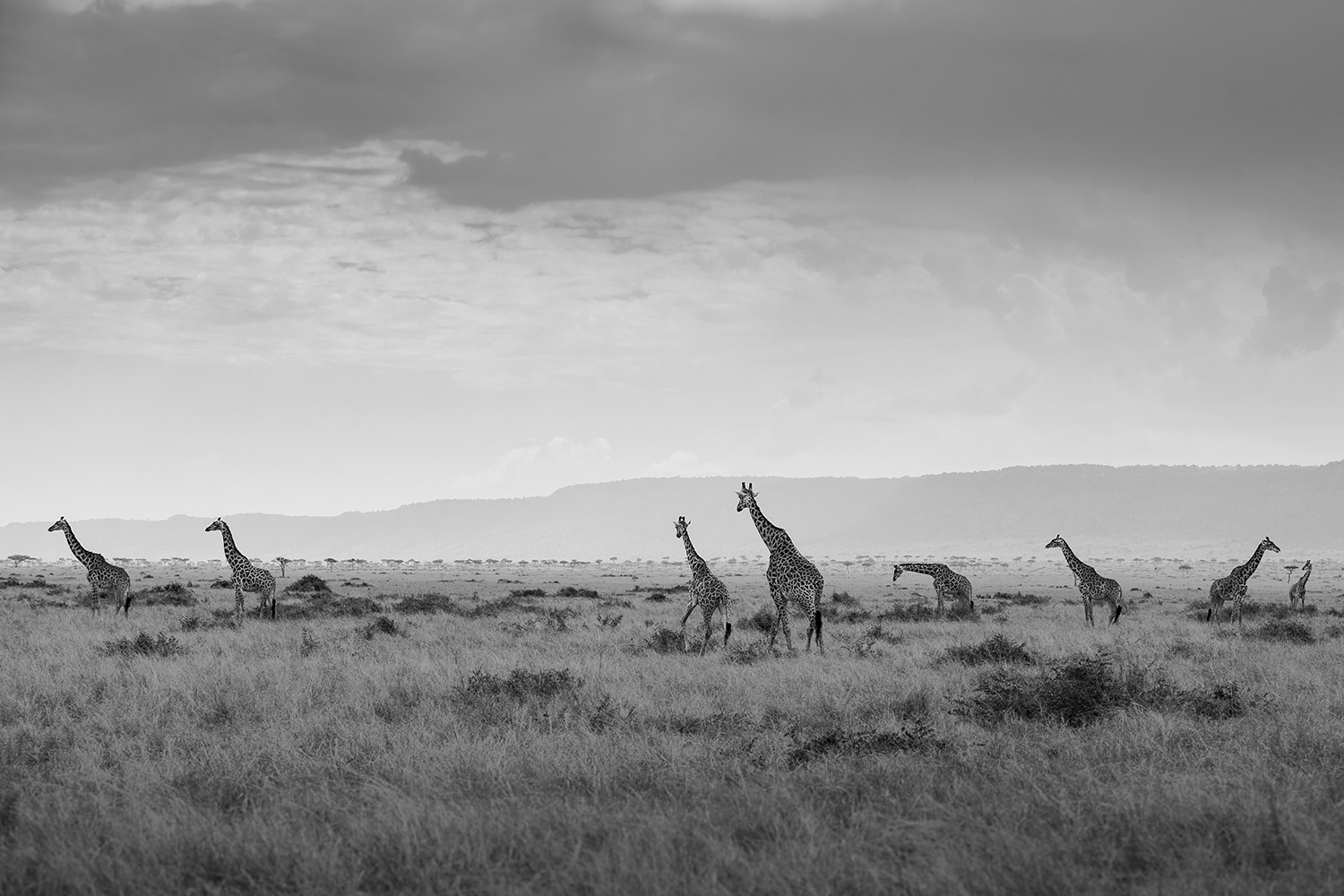
A very typical Mara landscape: an elegant journey of giraffe slowly ambling through the plains; the Ololoolo Escarpment in the background; and wispy clouds overhead. [f 6.3, 1/500, ISO 320, +0.67; photograph by Adam Bannister – converted to black and white in post]

A new born vervet monkey clings to its mother. [f 5.6, 1/400, ISO 320, +0.33; photograph by Jeff Njuguna]
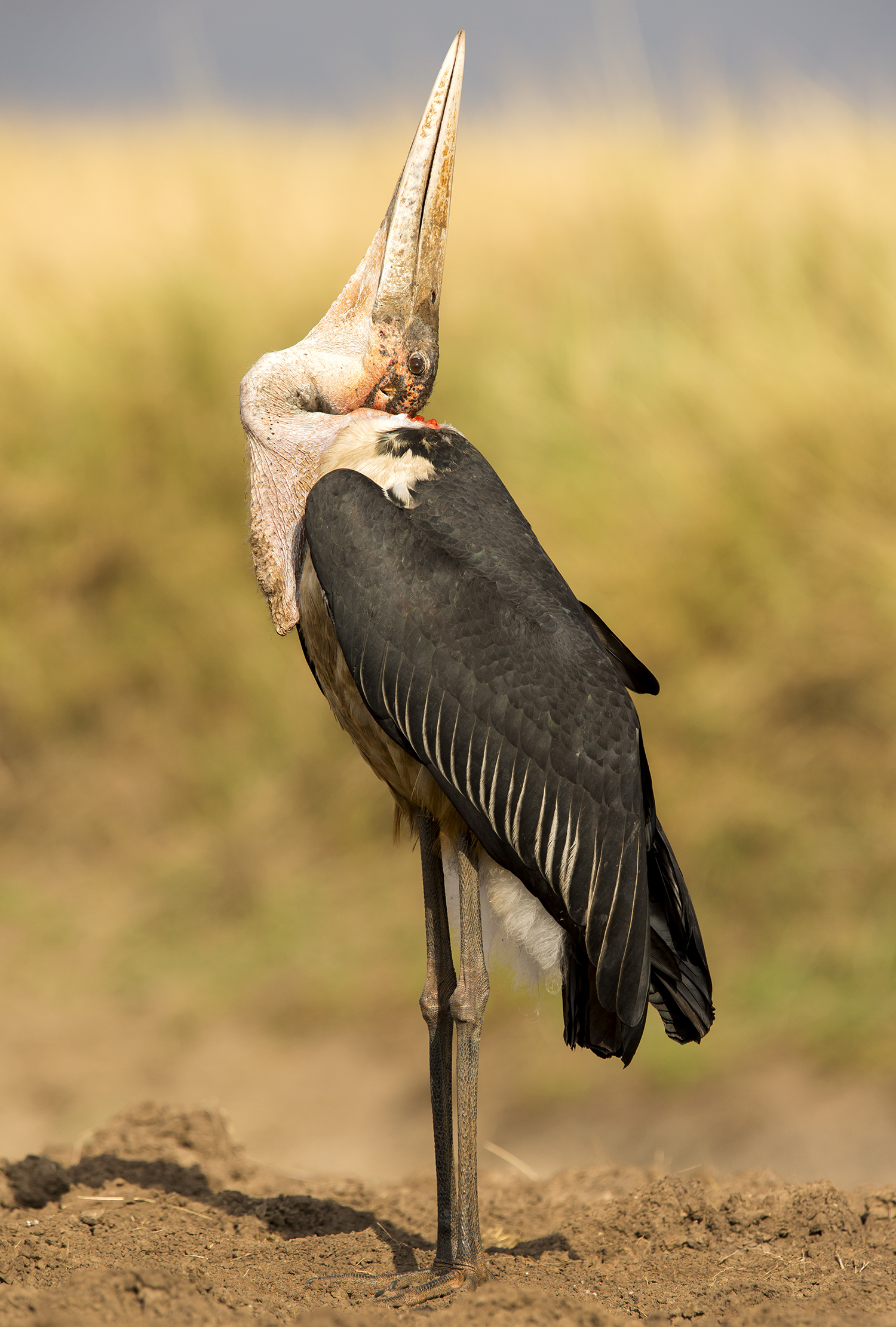
How could one not be amused by this piece of animal behaviour? I watched in delight as a marabou stork scratched it’s upper back with the back of its head. I love the vertical line extending throughout – an unusual composition for a large bird. [f 5.6, 1/800, ISO 320; photograph by Adam Bannister]
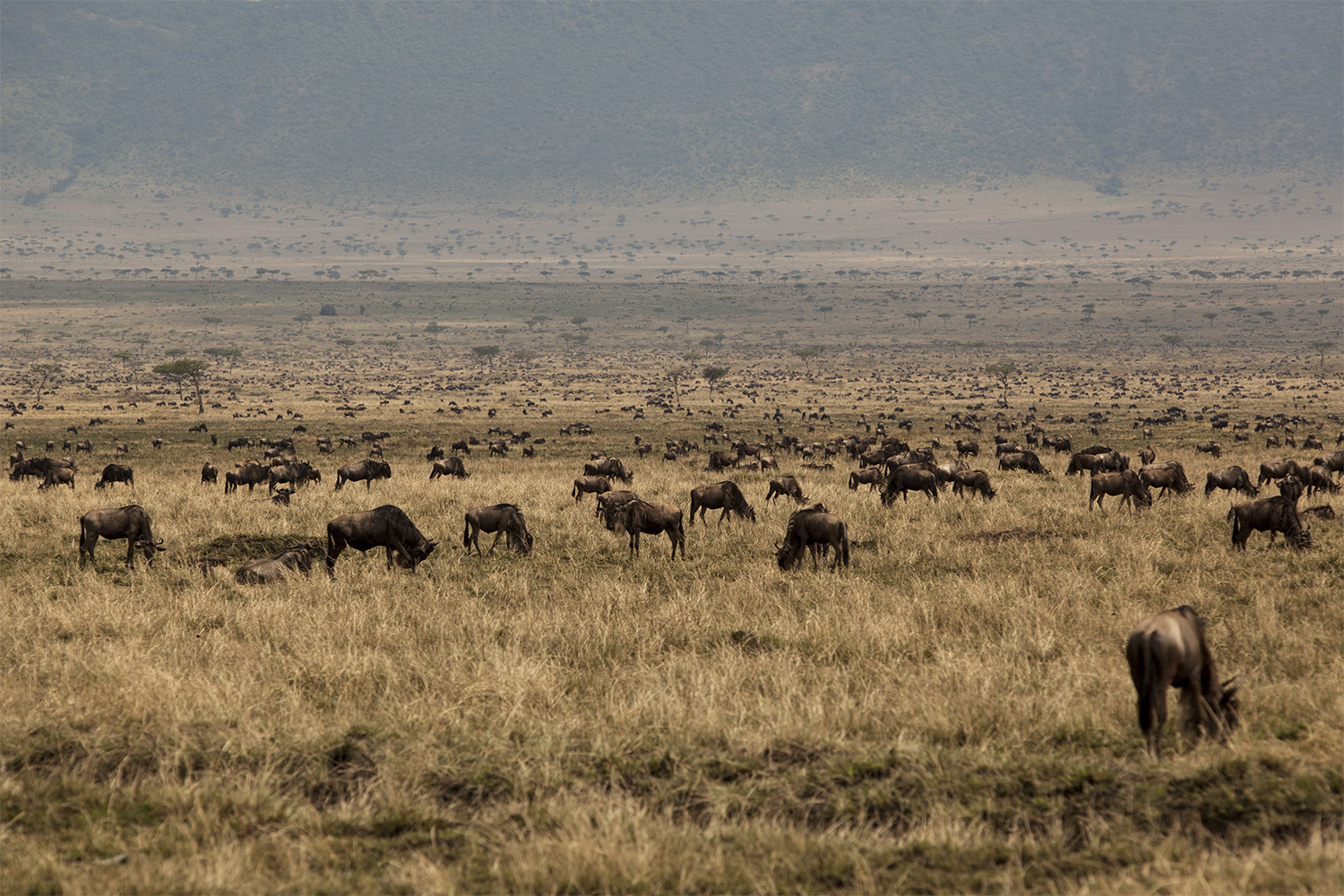
Difficult and harsh midday lighting meant this was never going to be a beautiful photograph, but I took it with the intention of capturing the sheer magnitude of the Great Migration and the size of the herds currently in the Mara Triangle. [f 6.3, 1/1250, ISO 160, -0.67; photograph by Adam Bannister]

I am a fan of creativity in photography. On this occasion I reduced the shutter speed to 1/25 in an attempt to show the movement and the speed of a river crossing. I tell my photographically minded guests to capture a handful of crisp, visually pleasing photos of a section of a crossing and then to try be more adventurous and creative – that way you don’t end up with thousands of the same pictures and you increase your chances of taking a photo that forces the viewer to look twice…the ultimate compliment to any photographer. [f 40.0, 1/25, ISO 500, +0.67; photograph by Adam Bannister]
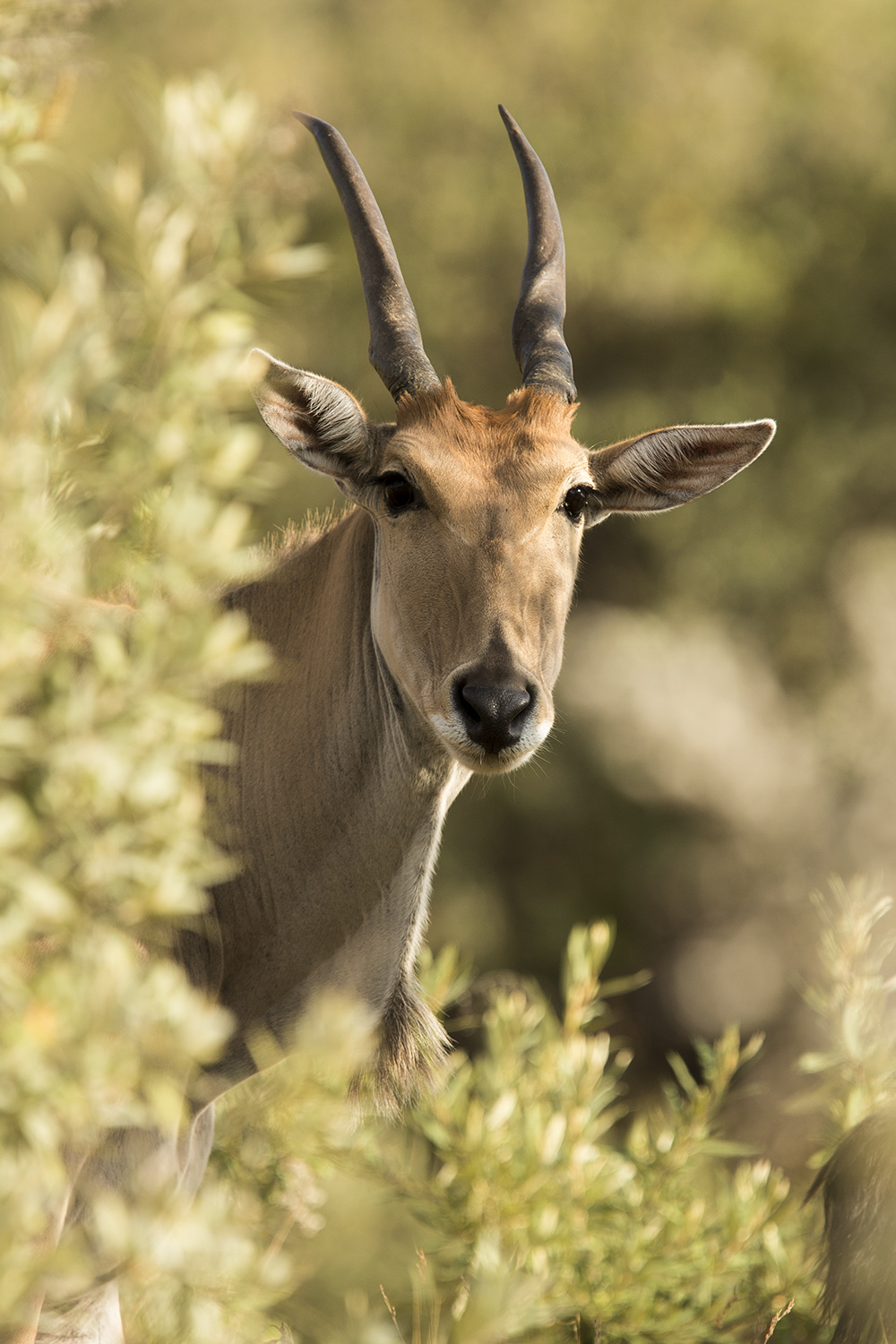
The moment I took this photograph I knew it was going to be a ‘keeper’. Soft gentle light and the beauty of natural framing all lined up perfectly to allow for a photo of Africa’s largest antelope, the eland. [f 5.0, 1/800, ISO 320; photograph by Adam Bannister]
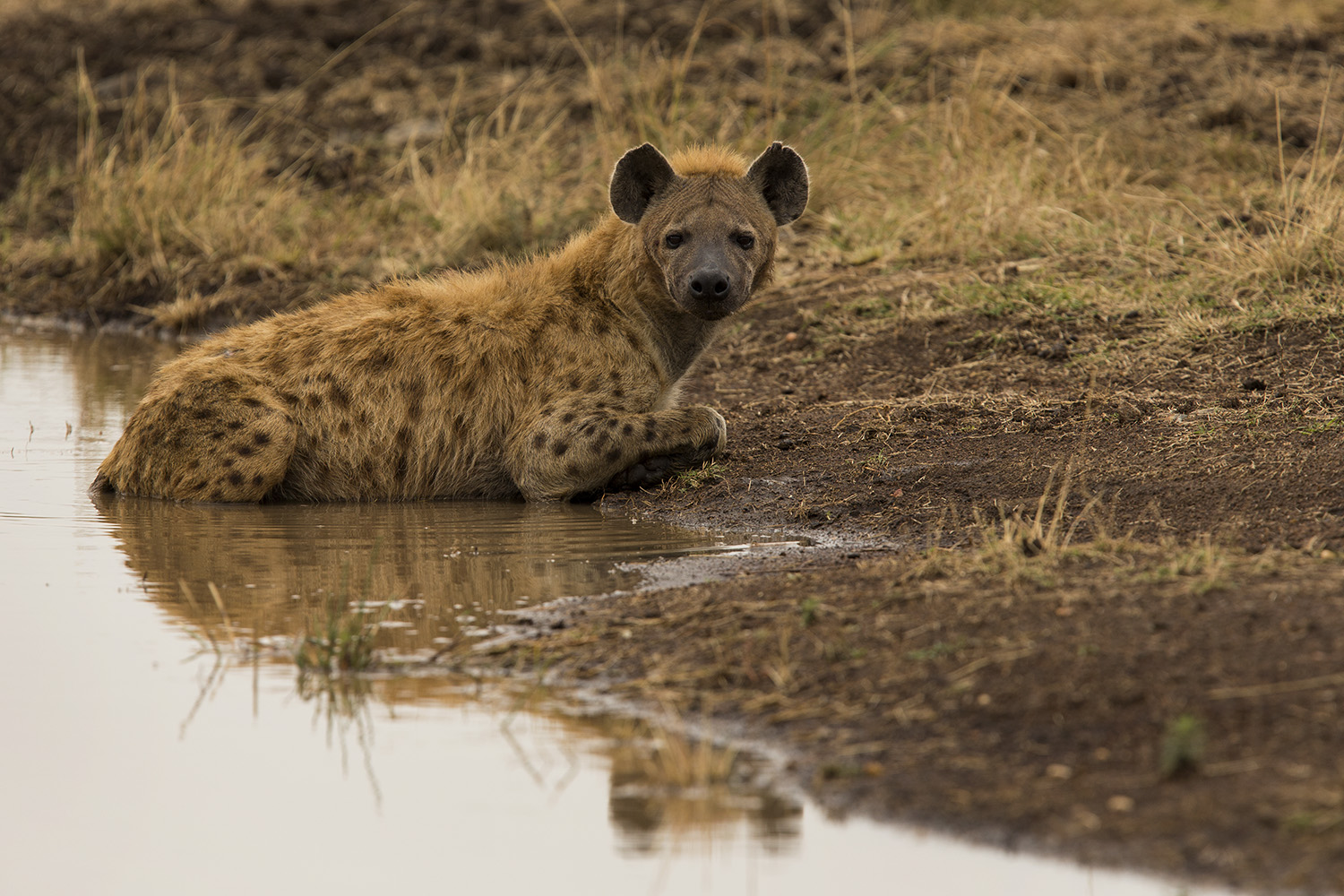
The rain settles the dust, making the earth darker, the colours richer and often allowing for wonderful imagery. [f 5.6, 1/800, ISO 500; photograph by Adam Bannister]
TAGGED WITH: Wildlife, Birdlife, Photography, Maasai Mara, Safari, Mara Triangle, Wildlife Photography, the great migration, This Week At Angama



COMMENTS (7)
Francis Bagbey
August 31, 2018My favorite was the eland. Perfectly captured.
REPLYAdam Bannister
September 3, 2018Thank you Francis.I love how it captures the gentle nature of the beautiful antelope.
REPLYJames Fitzgerald
August 31, 2018Love the jackal shots!
REPLYAdam Bannister
September 3, 2018Thanks James – it was an incredible sighting which allowed for a lovely sequence of photographs
REPLYChristine Goerner
September 3, 2018Thanks Adam. I am now reading your posts and looking at your photography with a fresh appreciation and understanding , having had the pleasure of staying at Angama and meeting you in person! My husband and I were so fortunate to have incredible sightings in the Mara, thanks mostly to our wonderful guide Sophie. We’ll never forget our time there and hope to return one day. In the meantime, I have literally thousands of photos to sift through and edit and can’t wait to share my favourites with you and the Angama team in the coming weeks. Cheers, Christine. PS I can’t believe the weather has turned so quickly…but as you say, great mood for photography.
REPLYAdam Bannister
September 3, 2018Christine thanks for the kind words. It was wonderful to meet you and to talk photography. You are taking some epic pictures and I follow your instagram page with great interest. Keep it up and I hope to see you back in the not too distant future.
REPLYAbdul salam
September 3, 2018I wish you a good more life and prosperity
REPLY